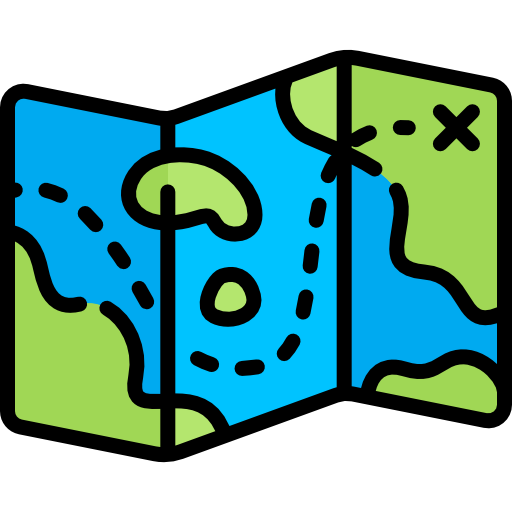Chandratal Trek
/ Per Person

Altitude :
4300 m

Duration:
5 Days

Trek Length
16 Km

Base Camp:

Trek Difficulty :
Easy

Altitude :
4300 mtr

Duration:
5 Days

Trek Length
16km

Base Camp:

Trek Difficulty :
Easy
Overview
The Chandratal-Baralacha Trek takes the trekkers all over the majestic Himalayas to explore the cold and dry mountain desert of Spiti and Lahaul Valley while passing across Bara Shigri Glacier, the biggest glacier in Himachal Pradesh. The route further takes us through the beautiful Chandratal Lake at an altitude of 4270 meters. Chandratal, which means the Lake of Moon, is shaped like a half moon and is set on a large meadow of edelweiss within a lower ridge and the main Kunzum range. The trek to Chandratal, the “Moon Lake” is almost like going to the moon and the region brings the feeling as if the explorer has been to a new place for the very first time. And the most eligible reason for such feeling is that the landscape and the environment of the whole region keep on changing with every sighting much better than before. And once you are at the lake the world just stands still and the trekkers faint into another world. The lake truly magnetizes anyone and a glorious trek to this region is moderately difficult type and brings an opportunity to ascent across an altitude of 4800 m without much difficulty.
The Chandratal-Baralacha trek ends on top of the Baralacha Pass (4830 m), which marks the highest point of the trek. From there, the tourists can go back by jeep and can have a stopover in Keylong (optional). This is a perfect trek during monsoon time, since there is no rain in this fascinating valley.
Itinerary
Day 1: Drive from Manali to Batal
Cars will be provided from Manali; please depart early to minimise traffic congestion at Rohtang Pass. Batal is a tiny town in the Lahaul and Spiti Himalayan area. Accommodations will be arranged in a nearby hotel.
Day 2: Drive from Batal (3907 m) to Chandra Tal (4300 m) same day drive Kunzum La Pass / Chika camp
The drive from Batal to Chandratal is 15 km long and it can be covered in less than an hour. Peep out of your window and witness the magnificent Chandra Bhawa ranges and snow clad peaks.
Day 3: Kunzum La Pass to Kibber village
The highest noteworthy pass, Kunzum La, connects Spiti and Lahaul valleys. After breakfast, we go to a hilltop town in the Spiti valley. Visit a monastery and the Kibber Wildlife Sanctuary while you’re there. The night will be spent at a lodge there.
Day 4: Drive from Kibber village to kaza
Rest day explore some time kaza monastery enjoy beautiful views back to hotel overnight stay kaza hotel.
Day 5: Drive from Kaza to Manali
In the morning, after breakfast drive to Manali via 2 high passes Kunzum La and Rohtang Pass. Have lunch en route. Reach manali late evening 6 to 7 pm.
Inclusion
Accomodation
Hotel, Camps, Resorts
Meals
Breakfasts, Lunches, Dinners
Transport
Public bus, Taxi, Train, Tram, Metro
Exclusion
Personal Insurance
Medical Certificate
Personal Medicine kit
Fitness
As you climb to higher altitudes, the air grows thinner and less oxygen is present. The amount of oxygen in our blood is equivalent to the proportion of haemoglobin that is saturated with oxygen. At altitudes above around 2,100 metres (7,000 feet), the amount of oxygen carried by our blood starts to decrease. At the same time, the human body possesses both immediate and long-term adaptations to altitude that help it somewhat compensate for the shortage of oxygen.
A Great First Trek for Anyone Who Wants to Get Into Hiking:
- The Bali Pass trek is an Easy to Moderate level trek in terms of fitness requirements. The track is well-marked and has only modest inclines and declines. Water fountains may be seen at various points throughout the path. However, it’s still best to be ready if you’re planning your first major Himalayan trekking adventure. Here is a plan for getting in shape for the trip.
- Our hikes are typically designed such that you cover around 9 kilometres in six hours, however this might vary somewhat depending on the terrain. It’s about the same as walking 6 kilometres an hour over the plains, therefore the speed is around 1.5 kilometres per hour.
- Following this plan, you may train yourself to run 3 kilometres in 30 minutes. Always begin your workout routine with some light stretching and warm-up moves.
- Follow this training schedule for trekking fitness required:
- Week 1: Walk for 10 minutes at a fast pace, jog for 10, and finish with a slow stroll for 10 minutes.
- Week 2: 15 minutes of jogging, followed by a 5-minute brisk walk. A leisurely stroll that takes no more than 5 minutes
- Week 3: Walk briskly for five minutes. Jogging for 15 minutes A brisk stroll that takes no more than 5 minutes
- Week 4: Do a brisk 5-minute walk, then a 25-minute jog, and finish with a 5-minute cool down.
Safety
Points to remember for safety in the trek:
- It is essential that you arrive at the starting point of any hike or excursion in the best possible physical condition and readiness.
- The hike is not tough; in fact, if you can keep both your feet and your mind calm and strong during the journey, you will discover that the hike is rather simple.
- When you are out on a hike, bear in mind that you may not always be with your guide and that you may not always be on the correct trail.
- The majority of individuals glance both where they are going and where they are going while they are walking; this might produce twitching in your legs, which can make the whole journey difficult.
- It is imperative that you see your physician if you are experiencing any kind of health issue.
- It is imperative that I have my medical equipment with me at all times; it is of the utmost significance.
- Indiantreks will ensure that you have a fully stocked first aid kit at all times, including oxygen cylinders and other medications that may be required throughout the trek.
- In the event that any of the trekkers have any more difficulties, the stretcher is used to transport them back to the base camp.
- During the Bali Pass trek walk, our camp is situated close to the tree line, so you won’t have any trouble getting enough oxygen there.
- In the event of a medical emergency, you should seek the assistance of your guide or another trekker who is knowledgeable in the area.
How To Reach
Directions to go to Dehradun:
- By Air: Jolly Grant Airport is the domestic airport that serves Dehradun, and it receives frequent flights from the main metropolises located across India.
- Traveling by Train: The Dehradun junction is the closest railway station, and it has excellent connections to major cities located around India.
- By Road: The road network in and around Dehradun is extensive and convenient. To get to Dehradun from Delhi or any of the other surrounding cities, you have the option of either driving there yourself or hiring a cab or taxi. In addition, there is a consistent bus service between Dehradun and the surrounding areas because to the extensive road network.
Thing To Carry
- Warm clothes and woolen socks
- Trekking shoes and trekking poles
- Windcheater and raincoat
- Sunscreen lotion and sunglasses
- Water bottle and energy bars
- Personal medication, if any
Must Read Articles
Best time for the trek
🗓️ Best Time to Trek — A Guide by Octatrav
One of the key advantages of many Himalayan treks is that they remain accessible for a large part of the year. Most trekking routes open up in March, welcoming trekkers with springtime freshness and moderate temperatures. This season continues through late June, offering pleasant weather and clear views—ideal for a memorable trekking experience.
🍁 Trekking resumes in mid-September and continues until late November, when the landscape transforms with golden leaves and crisp air. This autumn window is perfect for those who prefer scenic beauty combined with clear skies.
❄️ Winter trekking, although breathtaking, comes with challenges. From December to mid-March, most high-altitude trails get buried under heavy snow, making them inaccessible or risky. Government authorities usually restrict entry during this time to avoid mishaps due to extreme cold, snowfall, and avalanches.
✅ Summary:
Spring & Summer (March–June): Best time for pleasant weather and blooming landscapes.
Monsoon (July–Early September): Most trails are closed due to safety concerns.
Autumn (Mid-September–November): Ideal time with great weather and views.
Winter (December–Mid-March): High snow levels; many treks remain closed.
With Octatrav, you’ll always be informed about the best seasons for your chosen trek. Our expert guidance ensures that you trek during the safest and most scenic times of the year, making your adventure both memorable and secure.
How Difficult is the trek
This trek is generally considered to be of moderate difficulty, with a rating that can vary from easy to challenging depending on your experience and fitness level.
The journey begins at a base village situated around 6,000 ft, gradually ascending to a maximum altitude of nearly 11,500 ft over the course of a few days.
While the route mostly involves a pleasant hike through scenic landscapes, here are two main reasons why it falls under the moderate category:
– Long daily distances: On average, you may be covering 10 km per day, which demands good stamina and consistent pacing.
– Limited exit points: Most treks of this nature have only one route in and out, making emergency exits or quick returns difficult in case of unforeseen situations.
How to get fit for your trek
How to Prepare for a High-Altitude Trek
Fitness Guide by Octatrav
Preparing for a trek requires building both stamina and strength. One of the best ways to get started is by jogging, which targets the same muscles used during trekking—calves, glutes, and hamstrings. It’s a simple and effective way to improve endurance without the need for any equipment.
Minimum Fitness Target
To trek comfortably, you should be able to run 5 km in under 60 minutes. This ensures that you can maintain a steady pace and handle long walking hours at altitude.
How to Achieve This?
Here’s a structured plan you can follow:
🏃♂️ Cardio Training:
Jog at least 4 times a week – consistency is key.
Start small – begin with 2 km runs and gradually increase the distance.
Pace improvement – once you’re running 5 km, aim to bring your timing down to under 35 minutes.
Maintain for 2 weeks – consistently hitting this goal helps build real endurance.
⏳ Training Duration:
Prepare for at least 4–6 weeks based on your current fitness level. The earlier you begin, the better your trek experience will be.
💪 Strength Training Routine
Combine cardio with strength workouts to build muscular endurance:
Squats – builds quads, glutes, and hamstrings.
Lunges – mimics trekking motion; strengthens the entire lower body.
Step-ups – improves climbing strength for steep trails.
Core exercises – planks, Russian twists, leg raises for balance and stability.
Back workouts – deadlifts, bent-over rows, and shoulder presses to carry your backpack with ease.
🧘♂️ Flexibility & Recovery
Stretch daily – especially your calves, hamstrings, quads, and lower back.
Incorporate yoga or Pilates – enhances flexibility and mental focus.
Take rest days – they are essential for muscle recovery and injury prevention.
🔁 Trek-Ready Summary
🏃♂️ Cardio: Build stamina through jogging.
💪 Strength: Focus on legs, back, and core.
🤸♂️ Flexibility: Stretch regularly and stay injury-free.
⏳ Consistency: Stick to a 6–8 week routine for best results.
10 Reasons to Choose Octatrav for Trek
Why Choose Octatrav for Your Trekking Adventure?
Trekking in the Himalayas is a thrilling and unforgettable experience. Whether you’re walking through snow-covered paths, lush forests, or peaceful riversides, choosing the right trekking operator is crucial for a safe and comfortable journey.
Octatrav stands out as a trusted name in the trekking world. Here are 10 strong reasons to choose Octatrav for your next high-altitude adventure:
1. Experienced Professionals
Octatrav’s team includes highly trained professionals who know the terrain, weather, and routes in depth. Their insights and support will elevate your trekking experience.
2. Focused on Safety
Trekking at altitude can be unpredictable. Octatrav ensures your safety by equipping the team with first-aid kits, oxygen, and emergency protocols for any situation.
3. Small Group Sizes
To give you personal attention and a relaxed experience, Octatrav keeps group sizes small. This also reduces environmental impact and makes for smoother trekking.
4. Eco-Friendly Trekking
Octatrav encourages responsible travel. From minimizing plastic use to proper waste disposal at campsites, they help you leave no trace.
5. Comfortable Camping
After a long day of trekking, good rest matters. Octatrav sets up cozy camps with quality tents, warm sleeping bags, and hot meals so you sleep well and stay energized.
6. Nutritious Meals
Fueling your body right is essential. Octatrav serves fresh, nutritious meals for both vegetarians and non-vegetarians to keep your energy levels high throughout the trek.
7. Affordable Packages
You don’t have to overspend for a great experience. Octatrav offers budget-friendly packages that include accommodation, meals, guidance, and permits—everything you need.
8. Relaxed & Scenic Pace
Octatrav designs treks that balance exploration and rest. You’ll get ample time to absorb the beauty around you without rushing through the journey.
9. Customizable Itineraries
Want a special experience? Octatrav helps you tailor the trek to your preference—be it a solo hike, photography-focused trail, or a slower pace.
10. Trusted by Trekkers
Octatrav is praised by many happy trekkers for its hospitality, safety, and professionalism. The positive reviews speak for themselves.
Why You Should Do the Har Ki Dun Trek
Why Choose This Himalayan Trek for Your Next Adventure? – by Octatrav
Exploring the Himalayas is a dream for many, and every trail has its own magic. Whether you’re a first-time trekker or a seasoned explorer, here are ten reasons why your next trek with Octatrav can be an unforgettable experience:
1. 🏔️ Breathtaking Scenery
Enjoy mesmerizing views of snow-covered peaks, lush green valleys, sparkling rivers, and alpine forests. Each turn on the trail feels like walking through a postcard.
2. 🏡 Rich Cultural Experience
Pass through remote villages where you can interact with warm-hearted locals, witness age-old traditions, and taste authentic mountain hospitality.
3. 🌿 Diverse Flora and Fauna
From rare Himalayan birds to elusive animals like musk deer or black bears, the region is rich in biodiversity. Nature lovers and wildlife photographers will find every step rewarding.
4. 🥾 Moderate Difficulty Level
Most Himalayan treks are rated as moderate, which makes them suitable for beginners with preparation, and still exciting for experienced trekkers looking for beauty and challenge.
5. 📖 Mythological & Historical Depth
Many Himalayan regions are steeped in legend and ancient lore. Walking these trails often feels like stepping into a living story from Indian epics or ancient folklore.
6. 🤫 Peaceful & Untouched
Less commercialized treks offer serene trails where you can disconnect from city chaos and truly reconnect with nature and yourself.
7. ⛺ Unique Campsites
Camp under a sky full of stars, beside rivers or deep in pine forests. The silence, the chill, the camaraderie — it’s an experience that stays with you forever.
8. 🎒 Adventure Add-ons
Beyond trekking, enjoy photography, bird watching, star-gazing, or even meditative moments in nature. It’s not just a trek — it’s a full adventure retreat.
9. 🌅 Magical Sunrises & Sunsets
Witness golden hours like never before — with Himalayan peaks glowing pink, orange, and gold. These views are pure magic and make every effort worthwhile.
10. 💪 Personal Growth
Trekking challenges your body and mind, pushing you beyond limits. By the end, you’ll not only have beautiful memories but also a stronger, more confident version of yourself.
